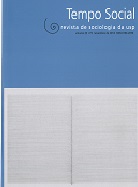Art as concept and image: the redefinition of "art for art's sake"
DOI:
https://doi.org/10.1590/S0103-20702013000200010Abstract
Contemporary art has absorbed fundamental changes into its internal conditions, including frameworks that approach art as a concept and as an image. This article examines the content of some of the principal theses of conceptual art, taking the work of Cindy Sherman as the empirical grounds for analyzing these frameworks. In fact this double of processing of turning various aspects of contemporary art into concepts and/or images represents a significant transformation in the artistic field. At the same time, the internal transformation seen in the artistic field also affects the relation between this same artistic field and the global social structure - in the case of this article, the relation between the artistic field and capitalism mobilized by the redefinition of the principle of "art for art's sake".Downloads
References
Aguiar, João Valente. (2010), “A imagem na cultura do pós-modernismo”. Tempo Social, 22 (1): 179-198.
Archer, Michael. (2008), Arte contemporânea: uma história concisa. São Paulo, Cortez.
Barrett, Terry. (2007), Why is that Art? Aesthetics and criticism of contemporary art. Oxford, Oxford University Press.
Barry, David & Meisiek, Stefan. (1994), “Making the invisible visible: symbolic means for surfacing unconscious processes in organizations”. Organizational Development Journal, 12: 37-48.
Barthes, Roland. (1984 [1968]), “La mort de l’auteur”. In: . Le bruissement de la langue. Paris, Seuil.
Berne, Betsy. (2003), “Studio: Cindy Sherman”. Tate.org.uk, 1 jun. Disponível em <http://www.tate.org.uk/context-comment/articles/studio-cindy-sherman>, consultado em 17/9/2013.
Blair, Tony. (2007), “Cultural speech at Tate Modern”. The Guardian, 6 mar. Disponível em <http://www.theguardian.com/politics/2007/mar/06/politicsandthearts.uk1>, consultado em 17/9/2013.
Bourdieu, Pierre. (1998), Meditações pascalianas. Oeiras, Celta.
. (1992), Les règles de l’art: genèse et structure du champ littéraire. Paris, Seuil.
Darso, Lotte. (2004), Artful creation learning-tales of arts-in-business. Frederiksberg, Samfundslitteratur. dcms -Department for Culture, Media and Sport. (2006), Annual report 2006. Londres, dcms.
Eagleton, Terry. (1994), The ideology of the aesthetic. Oxford, Blackwell.
Eco, Umberto. (1989), Obra aberta. Lisboa, Difel.
Florida, Richard. (2004), The rise of the creative class. Nova York, Basic Books.
Foster, Hal; Krauss, Rosalind; Bois, Yve-Alain & Buchloh, Benjamin. (2004), Art since 1900. Nova York, Thames and Hudson.
Foster, Hal. (1996), The return of the real: the avant-garde at the end of the century. Cambridge (ma), mit Press.
Freeman, Alan. (2007), Culture, creativity and innovation in the internet age. May 22-23 conference on ipr at Birkbeck College, Londres.
Gusmão, Manuel. (2011), Uma razão dialógica: ensaios sobre literatura, a sua experiência do humano e a sua teoria. Lisboa, Confrontos.
Harvey, David. (1990), The condition of postmodernity. Oxford/Cambridge, Basil Blackwell.
Heartney, Eleanor. (2001), Postmodernism. Cambridge, Cambridge University Press.
Heinich, Nathalie. (2003), Face à l’art contemporain. Paris, L’Échoppe.
. (1993), Du peintre a l’artiste. Paris, Éditions de Minuit.
Hesmondhalgh, David. (2007), The cultural industries. Londres, Sage.
Jameson, Fredric. (1993), Postmodernism or the cultural logic of late capitalism. Londres, Verso.
Jauss, Robert Hans. (1978), Pour une esthétique de la recéption. Paris, Gallimard.
Kurz, Robert. (1999), “O fantasma das belas-artes”. Folha de S. Paulo, 4 abr.
Luhmann, Niklas. (1990), Essays on self-reference. Nova York, Columbia University Press.
Mateus, Augusto. (2010), O sector cultural e criativo em Portugal: relatório final. Lisboa, Ministério da Cultura.
Miranda, José Bragança de. (2008), Corpo e imagem. Lisboa, Vega.
Moulin, Raymonde. (1995), De la valeur de l’art. Paris, Flammarion.
Nunes, João Arriscado. (1996), “Fronteiras, hibridismo e mediatização: os novos territórios da cultura”. Revista Crítica de Ciências Sociais, 45: 35-71.
Ribeiro, António Sousa. (2001), “A retórica dos limites. Notas sobre o conceito de fronteira”. In: Boaventura Sousa Santos (org.). Globalização: fatalidade ou utopia? Porto, Afrontamento.
Rorty, Richard. (1993), “O progresso do pragmatista”. In: Collini, Stefan (ed.). Interpretação e sobreinterpretação. Lisbon, Presença.
Saramago, José. (2002), O homem duplicado. Lisboa, Caminho.
Schwartz, Arturo. (2000), The complete works of Marcel Duchamp. Nova York, Delano.
Sontag, Susan. (2009 [1978]), “On photography”. In: Evans Jessica & Hall, Stuart (orgs.). Visual culture. Milton Keynes/London, Open University Press/Sage.
Vidal, Carlos. (2012), “Jeff Wall, arte contemporânea e vida quotidiana”. In: Aguiar, João Valente; Lopes, João Teixeira & Bastos, Nádia (orgs.). A literatura como objecto sociológico. Lisboa, Apenas Livros (col. Arte e Sociedade.).
. (2005), Sombras irredutíveis: arte, amor, ciência e política em Alain Badiou. Lisboa, Vendaval.
. (2002), Imagens sem disciplina. Lisboa, Vendaval.
Wu, Chin-Tao. (2006), Privatização da cultura: a intervenção corporativa nas artes desde os anos 80. São Paulo, Boitempo.
Downloads
Published
Issue
Section
License
Copyright (c) 2015 Tempo Social

This work is licensed under a Creative Commons Attribution-NonCommercial 4.0 International License.


